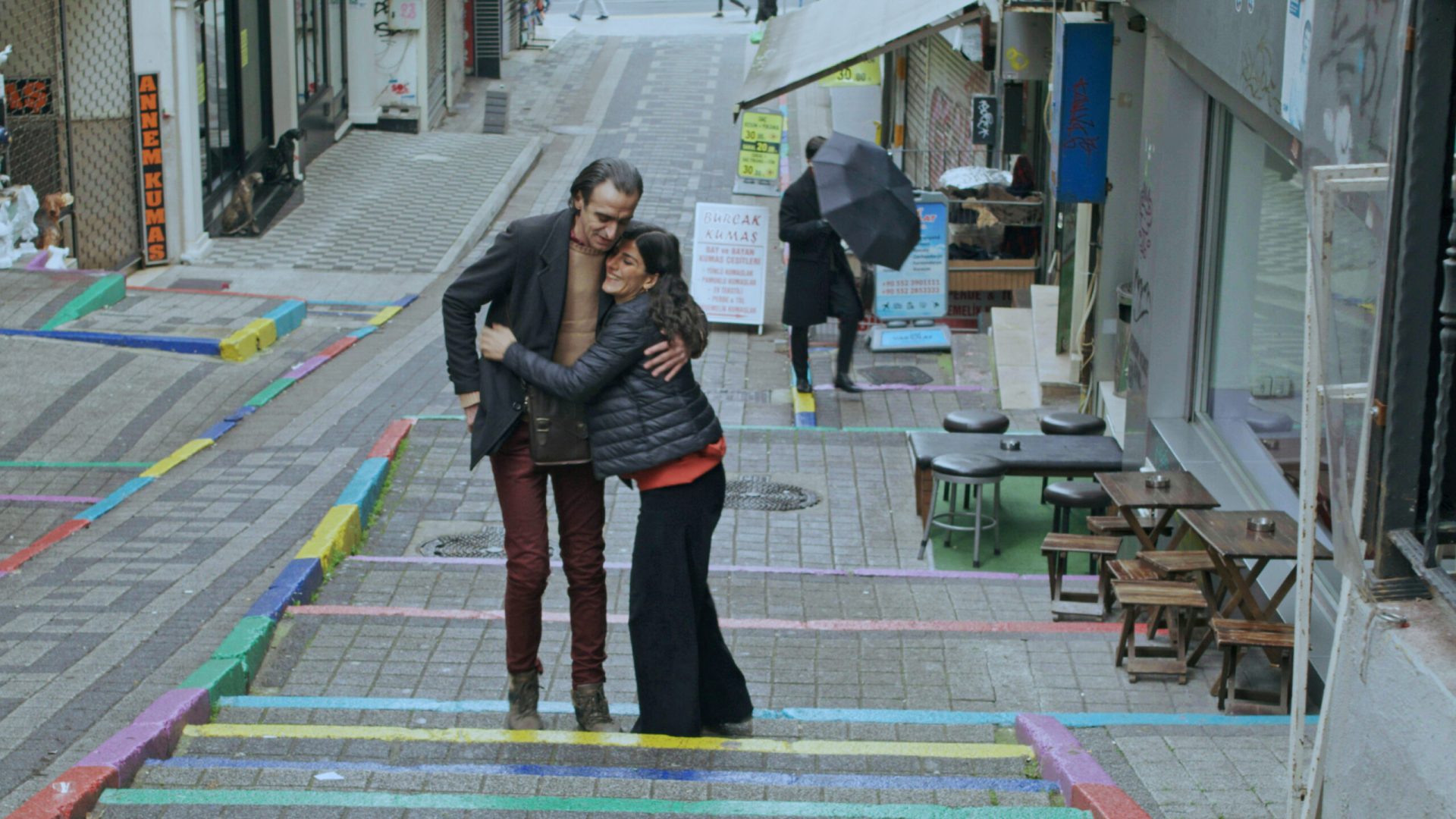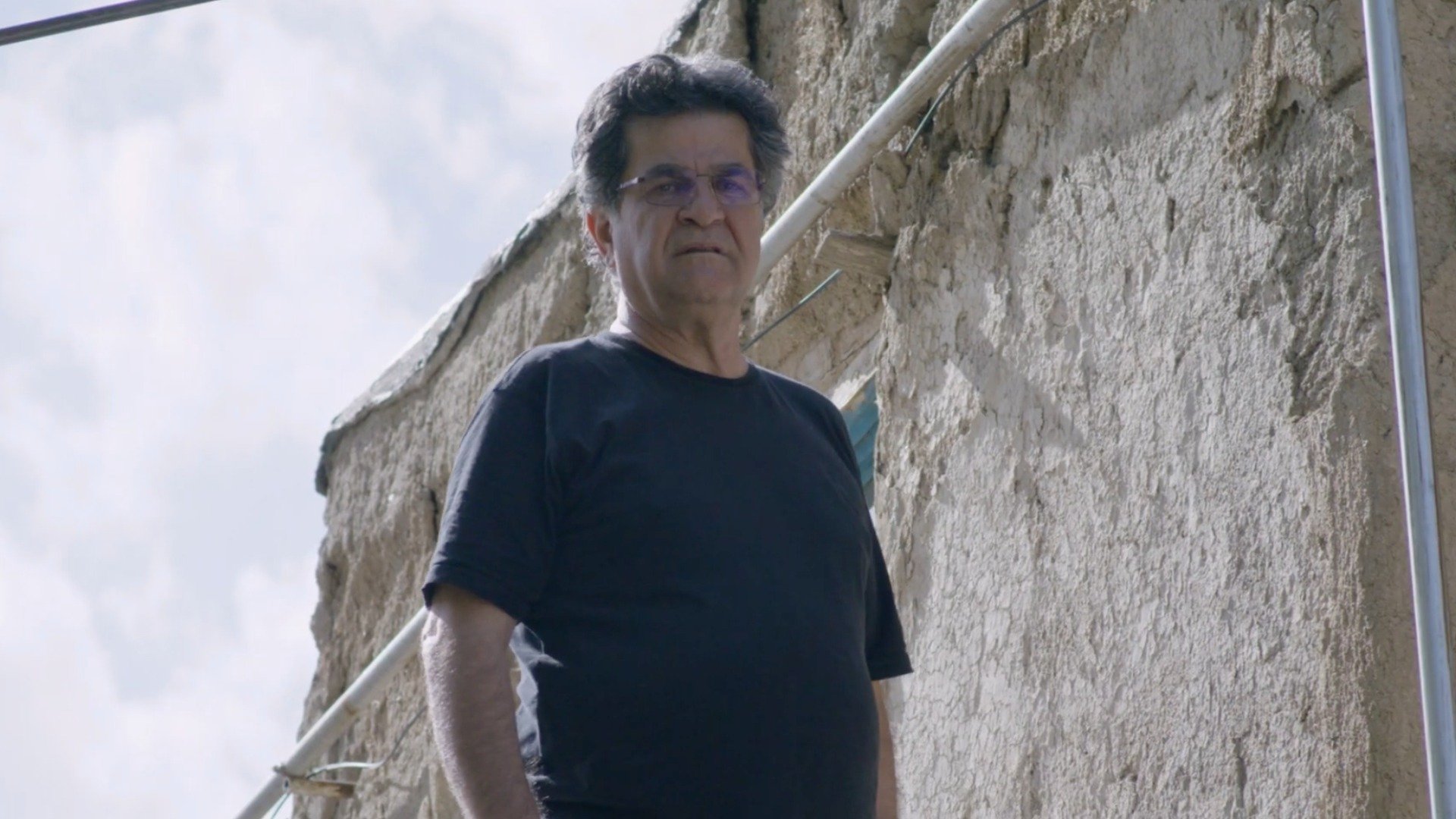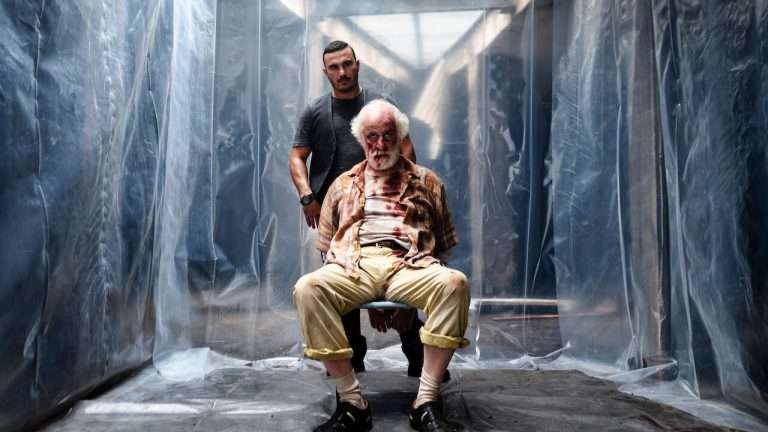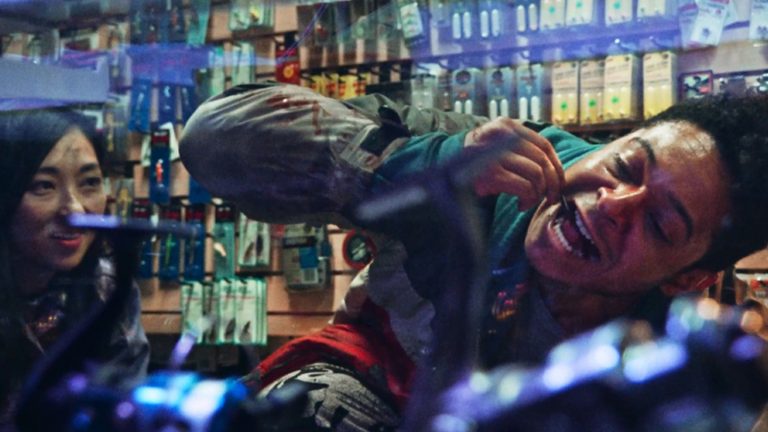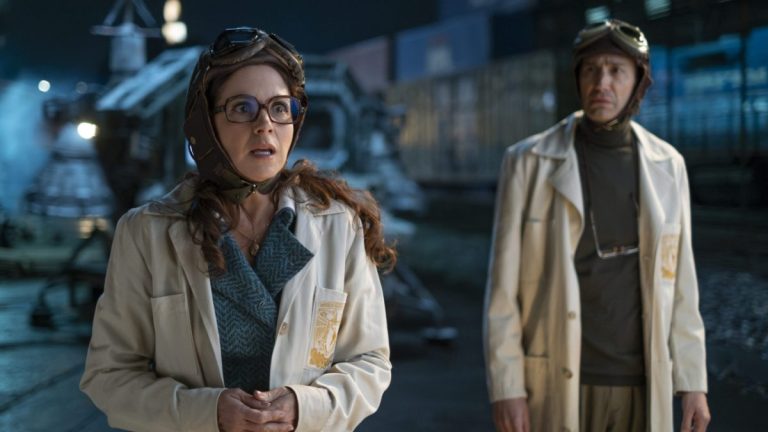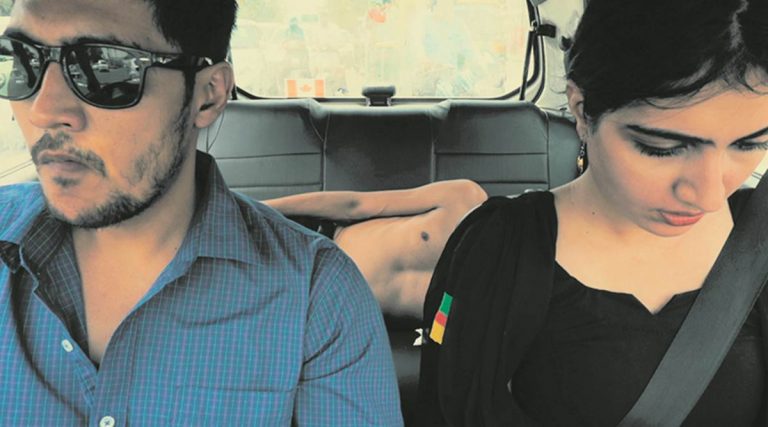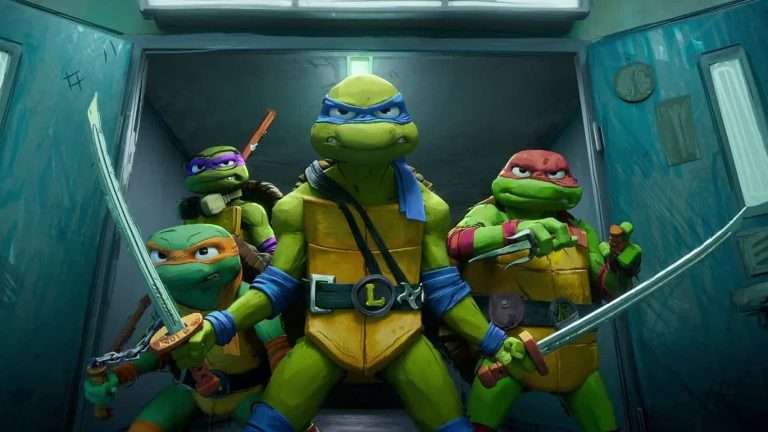No Bears (2022): To begin a discussion on Jafar Panahi’s No Bears, we have to situate the film in the man’s lived reality. No Bears is no ordinary film, and it is unlike anything I have seen, even though I am fairly exposed to Iranian cinema. It is not possible to detach No Bears and position it in a virtual realm, isolated from the non-fictional.
At the same time, No Bears does not allow its audience to see it as an unadulterated reality being experienced in time without inducing anxiety. The film establishes “truth” to be subject to contestations and challenges the comfortable definition we have assumed for the phenomenon of truth.
Who is Jafar Panahi?
One of the most acclaimed filmmakers from Iran, Jafar Panahi, began his career assisting Abbas Kiarostami and went on to expand cinematic language and contribute to the Iranian New Wave after becoming independent. He has made films that implicate the state in social phenomena under which his protagonists are functioning. The political language of his films is overt, scathingly criticizing sociolegal institutions.
And the most important part of Jafar Panahi’s filmmaking language is his projection of truth beyond denial, a pursuit for which he has often rejected the invisibilisation of the camera for the suspension of disbelief. Due to his rejection of the filmmaking convention, Jafar Panahi has significantly bridged the gap between the truly real and the cinematic reality.
Where is Jafar Panahi?
The Islamic Revolutionary Court of Iran convicted independent Iranian filmmaker Mohammad Rasoulof on July 23, 2019, for his film A Man of Integrity, which the authorities classified as propaganda against the state. A Man of Integrity has a protagonist who brews wine in hiding in a country where alcohol is banned for Muslims by the state and who speaks against the authorities denying land for a grave to the non-Muslim minority. In A Man of IntegrityRasoulof held the state accountable as a violator of human rights through the subtext, which led to a one-year imprisonment and a two-year ban on leaving the country.
On July 11, 2022, Panahi went to the prosecutor’s office to inquire about Mohammad Rasoulof and another filmmaker, Mostafa Aleahmad, where he was detained and imprisoned by authorities for a six-year prison sentence handed down in 2010 but never enforced. After spending more than six months in prison, Panahi initiated a hunger strike for his release, two days after which he was released on bail.
Panahi compared the state’s hostility towards him with hostage-taking, arguing that the statute of limitations of his sentence has expired. Citing the example of thousands of prisoners across Iran, Panahi began the hunger strike with the motive of protesting against the inhumane behavior of the judicial apparatus. Refusing to eat, drink or take his medicine, he was determined that either he would be released with the dearest possession of his life or his lifeless body will leave the prison.
No Bears (2022) Plot Summary & Movie Synopsis:
A filmmaker, Jafar Panahi, who the state has prohibited from leaving the country, has arrived at a village, Jaban, situated at the Turkish-Iranian border. Panahi is directing a film based on an Iranian couple, Bakhtiar and Zara, in Turkey that wish to leave for France. We are told that the couple attempting to flee to Paris is, in fact, a real couple that Panahi has convinced to be shot for his film.
Naturally, many details of the process of human smuggling are also leaking into the film Panahi is making. The village he is currently residing as a guest is the closest he can be to the shooting’s location. He is living as a tenant to Ghanbar, a local. Since Panahi cannot cross the border to enter Turkey, he gives instructions to his assistant Mohammad Reza on video calls, monitoring the shooting from a distance.
In the village, Panahi’s inquisitiveness translates into him capturing the moments of life around him, in still and in motion. One day he is asked by a group of elders in the village to give the photograph of a young couple under a walnut tree that he took. Panahi claims that he has not taken any such photograph.
The elders reveal the village’s tradition that when a girl is born in the village, her umbilical cord is cut in the name of her future husband. The girl in the “alleged” photograph taken by Panahi is a man’s (Jacob) destined fiance (Gozal) sitting with another man (Solduz), which is why the photo is critical to the villagers. Upon Panahi’s denial of the photograph’s existence, the elders return, but Panahi is asked to submit the photograph by the sheriff, at whose behest he is hosted in the village.
One night, Reza comes to Panahi in the village even though he had been instructed not to do so. He requests that Panahi must come along with him to Turkey. Reza goes on to reveal a secret “contraband” path that he has discovered and secured for Panahi’s border crossing. He then takes Panahi on the route, but Panahi steps back right when he reaches the border arguing if crossing it is so easy, then why is it so complicated?
One night, Panahi is visited by Solduz discreetly, who requests him to hold onto the photograph for just a week, during which he would escape with Gozal, for they love each other. Panahi does not show any solidarity with Solduz and attempts to detach himself from complicity. On the other hand, the villagers aren’t convinced of Panahi’s disclosure.
They push the demand for the photograph once again and bring a child who had claimed to witness Panahi taking a photograph, leading Panahi to submit his memory card to the villagers as evidence of his innocence. For the erasure of doubt, the villagers then ask Panahi to go through their ritual of testifying in the name of the Quran, to which Panahi obliges.
While going to perform his testimony, he is stopped by a local who asks Panahi to join him for tea. He convinces him that he will be going along the same route in a while and it is safe to go together, for the route is full of bears. During their brief time, the man tells Panahi that he must admit that there’s no photograph, even if it is a lie since it is for peace.
He later asks Panahi to go fearless as there are no bears on the route, and he merely lied to have some of his precious time. In the ceremony, Panahi requests that his testimonial be obtained on a recording camera rather than on the Quran, the footage of which he will distribute among the villagers as evidence.
The villagers, headed by the sheriff, agree to Panahi’s request. However, the testimony is interrupted by Jacob when Panahi mentions that he does not understand the customs of the village. An enraged Jacob calls out Panahi for disrespecting the village’s traditions and villagers for their complicity. The next day, Panahi witnesses a brawl between Jacob and Solduz.
Additionally, the tension in the village is rising because the people have witnessed Panahi going to the border. The village’s economy is primarily dependent on smuggling goods across borders, and Panahi’s intervention has alerted the authorities, which is lethal to the village’s economy. A police officer tips off Ghanbar that it would be best for Panahi to leave the village.
In the film Panahi is making, Zara has secured a fake passport to use as a proxy for her departure, but Bakhtiar hasn’t. To send Zara, Bakhtiar lies about getting a passport for himself as well, which is discovered by Zara as they are leaving. Zara shares her disappointment towards Panahi for letting it happen despite knowing that she cannot leave Bakhtiar behind, an accusation he denies but listens to, given the intensity of the moment. Zara walks out of the film set and goes missing. A few days later, her body is found washed ashore, indicating suicide by drowning.
As Panahi is leaving the village, he comes across villagers mourning the dead bodies of Gozal and Solduz, who apparently tried to cross the border and got shot by authorities. A visibly disoriented Panahi stops the car at a distance to catch a moment of breath as he processes his reality. The film closes with the sound of him starting the car.
No Bears (2023) Themes Analysed:
The Autogenous and Perpetual Conflict Between the Theories of Truth
A performative truth is one in which the speech act is performed, which establishes an agreement between the claim and the performance. Hence, truth manifests in action, or instead, the action becomes the truth. The performative truth functioning in No Bears is the taking of the alleged photograph.
However, the performative truth is narrow. It is unrevealing of anything but the action itself. To say that the photograph was taken only asserts the function of the statement, i.e., the photograph was taken. No causal associations or impact pathways can be drawn from the expression of a performative truth. In this manner, it corresponds to an inadequate representation of reality. It cannot substantiate anything per see.
Sociocultural and political processes create the broader constructivist truth via interactions between agents of power and those without it. So while Reza suggests that the apparatus has been put into place for Panahi only to take a step across the border, Panahi criticizes the inadequacy of the truth by questioning the inherent complexity of the act and thus bringing to our attention what borders fundamentally stand for.
A constructivist truth is registered by the senses only when the impact of the truth is brought to the foreground. Consequently, the foregrounding of constructivist truth requires the construction of the subject(s) in a manner that not only shows how their truth influences them but also how the truth manifests as a blanketing phenomenon in which there is a constant interaction of the subject(s) with the truth. Bakhtiar and Zara’s urgency to leave Iran and yet, not being able to foreground the constructivist nature of the truth.
The third type of truth in function is the truth by consensus. Whatever is agreed upon by the group is taken as the truth. Villagers’ faith in their traditions and their belief in the existence of the photograph is the truth by consensus.
The exploration of the multiple types of truth is not limited to showing its multidimensionality or that it can have many colors due to its subjective origin (like Farhadi does in A Hero) but is essentially a portrayal of the conflict between different theories that assign a phenomenon with the status of “truth.” The portrayal ends up motivating us to challenge what exactly determines the truth.
Or is the determination of truth rooted in the pragmatic theory in which every phenomenon becomes subject to scrutiny, verification, and confirmation before it is accorded the status of truth? If that is the case, then does that explain the villagers’ emphasis on an absolute erasure of doubt? No Bears shows that this conflict is not only self-igniting but also perpetual in nature across phenomena.
A Filmmaker’s Frog’s Eye View and the Aftermath of Intervention
While most filmmakers advocate distancing themselves from their subjects so that they can access an unadulterated reality via observations, Panahi deliberately constructs himself into the film as its subject for two reasons: to expose the elusive truth about the conflict between the theories of its determination/definition and to overcome the jarring nature of reality which prevents its mirrored construction in cinema.
Let us understand the difference between cinematic reality and the reality of our experience. Reality is a dynamic phenomenon. It is a culmination of countless variables with secured existence, in both mobility and stagnation, via interaction and non-interaction with each other, causing the perpetual transformation, transition, altercation, creation, and/or destruction of the nature of things in the observable spacetime defined by special relativity.
By virtue of its forever-changing character, it is also theorized as forever decaying. A film is a microcosm of everyday reality. To put it into an analogy, if the reality is a polytope, then a film is a polyhedron, and the former becomes a multidimensional analog of the latter. Realism in cinema is not experienced in the same way as reality itself. Unlike reality, a film mimics elements of reality and is constrained by its dimensions. Reality is jarring, formed by countless movements in endless space.
When Panahi builds the story with him as its subject, he is neither a distanced observer nor a neutral agent whose engagement has no consequences. He is not proximate to a subject to secure intimacy; he himself is the subject, and his presence has its consequences. By virtue of his presence in the narrative, he gets a frog’s eye view (contrary to a bird’s eye view of a filmmaker behind the camera) as he starts experiencing his narrative.
There is no difference in the life history of the Panahi existing for the audience and the Panahi beyond the film. This is why we find ourselves aware of the implications of his movements within the film. The gap between the cinematic reality and the reality of the audience is immediately bridged in the form of Panahi himself.
To overcome the jarring nature of reality, Panahi weaponizes spontaneity in the same manner as Asghar Farhadi does in A Hero (2021) and lets one event interrupt the other before the latter culminates. This is why we never truly believe any information being disseminated. Every time Panahi is confronted, his denials lack elaborate reasoning, and we are forced to read his gesture.
To put it into perspective, I would mention a very crucial sequence from the film. When Panahi surrenders his memory card to the doubting villagers and also agrees to oblige to the oath-taking on the Quran, we are convinced that Panahi had always been telling the truth. But his walk to the oath-taking ceremony is interjected by a local who clearly mentions that he can also lie in his testimony if it is for peace (thus, implying the possibility of him lying).
The conversation also happens in moments borrowed via a lie about the bears making the route dangerous. Once the conversation has ended, there are “no bears,” which reinstates the doubt in the audience’s mind about Panahi’s truth.
Panahi’s creation of an interplay of events disturbing each other’s flow helps in the depiction of reality’s jarring nature, making the portrayal susceptible to belief as is. And it becomes increasingly impossible to differentiate what is possibly “fictionalized” and what is occurring in real-time.
The Domineering Potency of Camera and the Invasion by Cinematic Reality
Panahi’s insertion of the cinematic reality in the reality of the subjects of his film-within-the-film, i.e., Bakhtiar and Zara, and his intimate intervention into the reality of the villagers trigger a chain of events, which reveal the impact of social institutions on love. On the one hand, we see Bakhtiar and Zara trying to liberate themselves from a fundamentalist state with a greater aspiration for life.
On the other hand, we see Solduz and Gozal trying to liberate themselves from a traditionalist society. But both couples are embargoed from a fulfilling life due to the incompatibility between love, traditions, and their material conditions. We see how institutions become predatory to human freedom.
At the same time, Panahi’s injection of his own reality into the reality of these four people as he willingly shoots a couple for a film and allegedly takes a still of another couple, which remains undetermined, causes disturbances that inadvertently lead to the death of three people.
Panahi might not have taken the picture, but the villagers’ belief in its existence and their annoyance at the lack of retrieval prohibits the resolution of the feud within the village, amplifying the urgency for the young couple to attempt to flee. Panahi might not also have known about Bakhtiar’s lie, but his presence as a storyteller representing these people contributed to an environment in which Bakhtiar felt compelled to lie. In this way, his reality seems to become invasive, implicating the power of an image in determining social outcomes.
No Bears (2023) Ending, Explained:
As Panahi is leaving the village upon Ghanbar’s advice, he witnesses the dead bodies of Solduz and Gozal. On the other hand, Zara had been angry at Panahi’s concealment of truth as critical such as Bakhtiar possession of a fake passport. Deeply hurt by Bakhtiar’s lie and exhausted in her pursuit of liberation, Zara committed suicide.
The subject of No Bears, Jafar Panahi, the filmmaker, is leaving three dead souls behind, and even though he has not caused their death, he has rendered the environment conducive to the same. Jafar Panahi is struggling to process the aftermath of his intervention and define his role in the events. The manifestation of guilt of complicity is suggested by the pause in the filmmaker’s mobility.
At the same time, the sound of the car restarting suggests a forceful movement from the present to the future because the dominating potency of an image(s) transcends a filmmaker’s abilities and intentions. This is not merely a reflection of what happens in No Bears, but it also comments on the consequentiality of a filmmaker’s intervention who holds the power of a camera.

